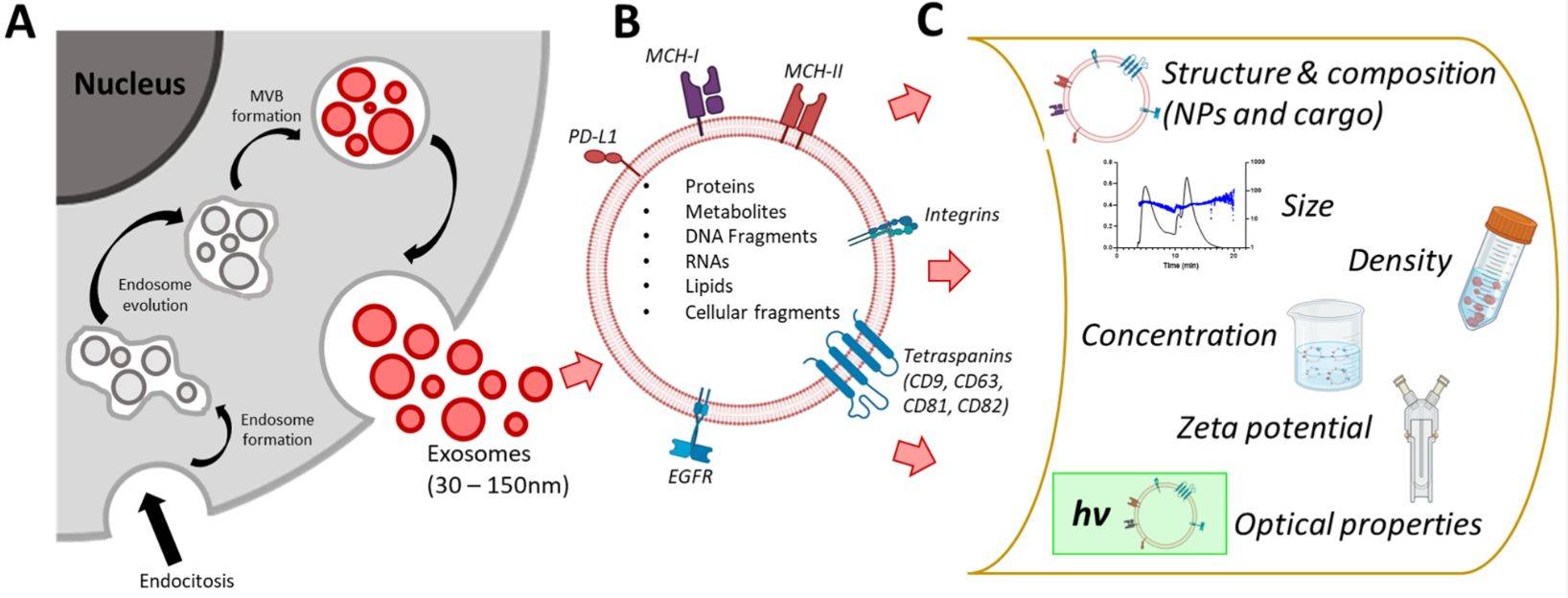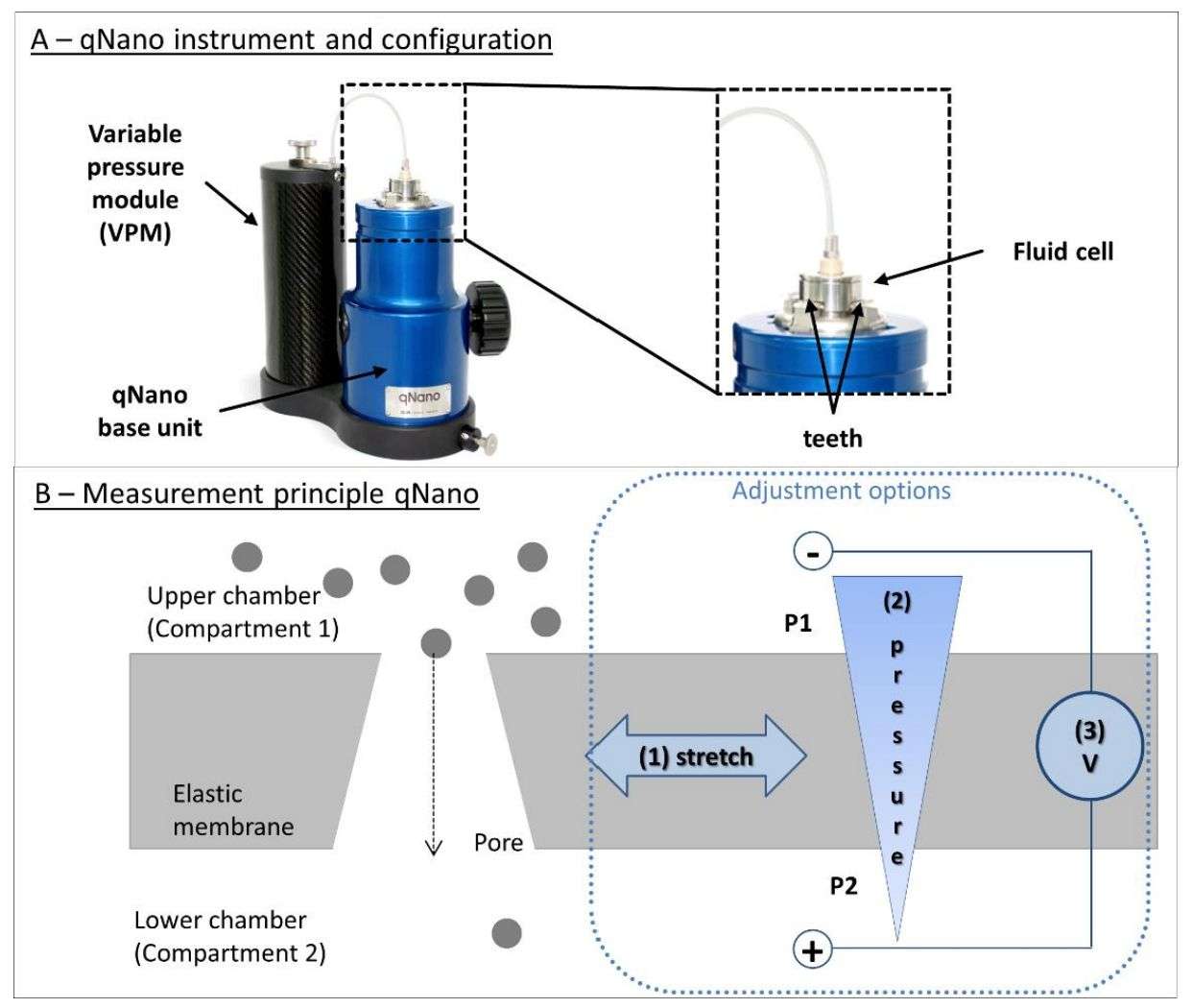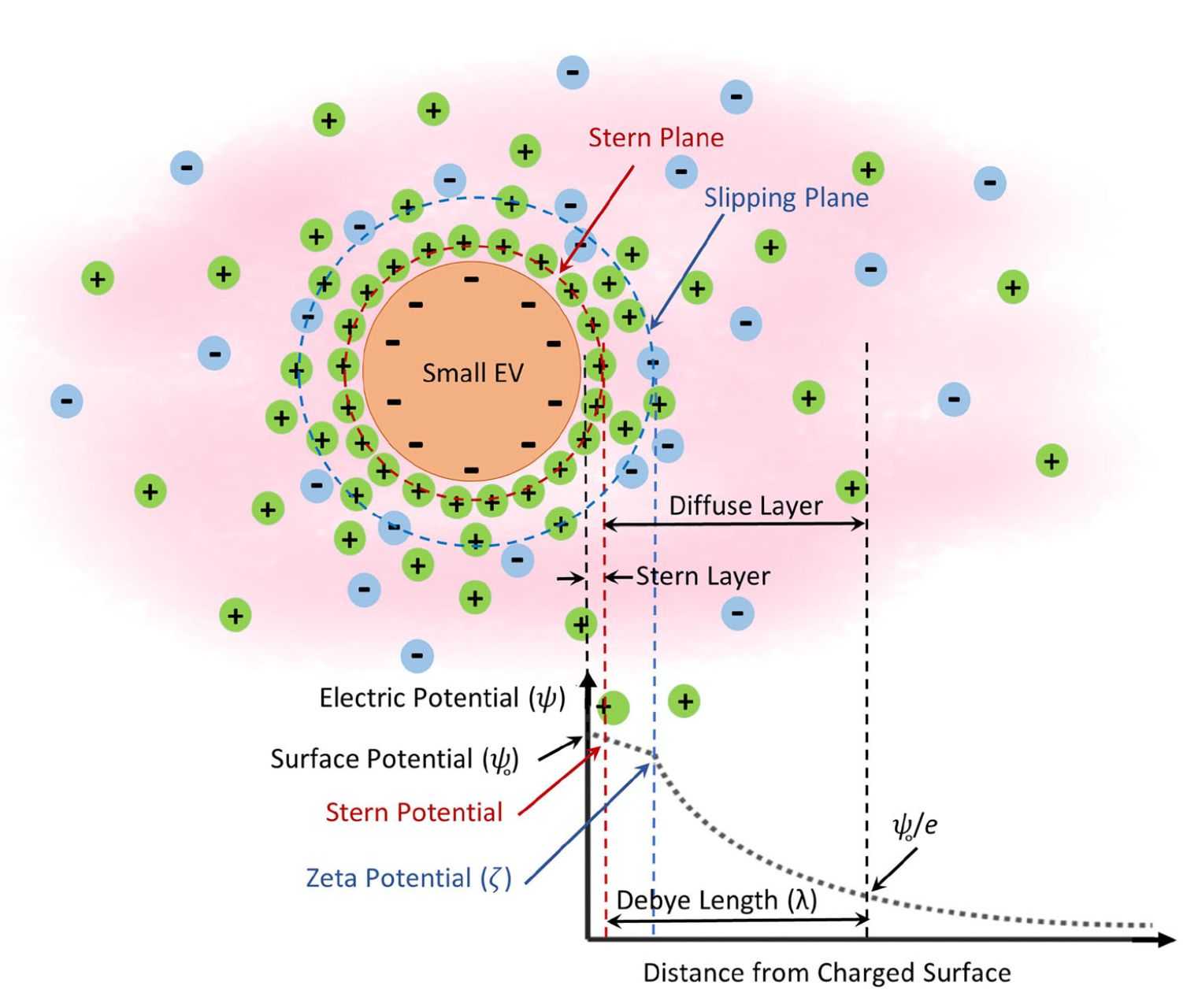Tunable Resistive Pulse Sensing (TRPS) for Exosome Characterization
Exosomes are vesicles that have attracted attention for their diagnostic and therapeutic potential. It has been shown to play important roles in a variety of physiological and pathological processes, including coagulation, immune responses, and cancer. Accurate characterization of exosomes is essential to further understand their biological relevance. Tunable resistive pulse sensing (TRPS) has shown promise as a single-particle-based method for exosome quantification and sizing.
 Figure 1. Overview on exosomes. (Marassi V, et al., 2023)
Figure 1. Overview on exosomes. (Marassi V, et al., 2023)
What is TRPS?
TRPS is a single-particle measurement technique for nanoparticles in the size range of 40nm -11µm that exceeds the precision and accuracy of commonly used light scattering techniques. TRPS is suitable for a range of biological samples containing colloidal particles, including exosomes/extracellular vesicles, virus-like particles, and liposomes. More recently, TRPS has been used to determine the size and concentration of unlabeled exosomes after calibration with known standards (e.g., polystyrene nanoparticles of well-defined size). The availability of commercial TRPS devices and their sensitivity have made it possible to study purified biofluids containing exosomes. In addition to measuring size and concentration, TRPS can also accurately measure exosome surface charge (zeta potential) by measuring the time each exosome spends in the nanopore.
How does TRPS Work?
TRPS is a technique for detecting individual nanoparticles by measuring the change in current as each particle passes through a tunable nanopore. It utilizes the change in current to evaluate the movement of individual particles between electrodes. TRPS monitors the current flowing through the adjustable nanopore and produces a transient change in the ionic current as each particle passes through the nanopore. The magnitude of the change is proportional to the volume of each particle, thus determining the particle size of individual particles. Particle concentration can be accurately calculated from particle flow rates measured at several different applied pressures. Electrophoretic mobility and surface charge can be calculated from the velocity of the particles through the pores.
 Figure 2. Tunable resistive pulse sensing technology (TRPS): instrument, specific pores, and measurement principle. (Gross-Rother J, et al., 2020)
Figure 2. Tunable resistive pulse sensing technology (TRPS): instrument, specific pores, and measurement principle. (Gross-Rother J, et al., 2020)
How to Characterize Exosomes by TRPS?
Isolating exosomes, the exosomes to be measured are suspended in an electrolyte and passed through a nanopore chip with a specific pore size. The exosome passes through the nanopore for a split second occupying the same volume of electrolyte, and the resistance between the two electrodes inside and outside of the pore (a circuit of constant-current design) changes transiently, generating a pulse of potential. The intensity and number of pulse signals are proportional to the size and number of exosome particles passing through the nanopore. By directly converting the pulse signals, information on the size and number of exosome particles in the test sample can be obtained. At the same time, calibration particles of known size and concentration are equipped to synchronize the assay as baseline data to achieve quantitative calibration of the measurement data.
Measuring Zeta Potential of Exosomes by TRPS
The TRPS technique determines the surface charge of particles individually by analyzing the duration of resistive pulses of individual particles at different driving forces and comparing them to standard samples of known size, surface charge, and number concentration. The width of each pulse is related to the passage of the particle through the tapered hole, and by analyzing the pulse width, the velocity of each particle can be obtained. By determining the velocity of the particles, the electrophoretic mobility of each particle can be obtained, meaning that both size and charge information can be obtained, which can help to explore the surface function of exosomes.
 Figure 3. Potential distribution of electrolytes around extracellular vesicles. (Tamrin SH, et al., 2023)
Figure 3. Potential distribution of electrolytes around extracellular vesicles. (Tamrin SH, et al., 2023)
What is " Tunable"?
TRPS is an optimization of resistive pulse sensing (RPS) and represents a new and more comprehensive technique. Nanoparticle suspensions are complex systems, and characterizing them requires optimized settings and measurements for each sample under multiple conditions. Adjust the nanopore stretch "S" to optimize the nanopore size to the particle size range. The applied pressure "P" can be adjusted to optimize blocking frequency and duration. Measurements at multiple pressures are required to calculate particle concentration and single particle charge analysis requires very fine pressure control. The applied voltage "V" can be adjusted to attract particles of different surface charge or polarity through the nanopore and optimize the signal-to-noise ratio of the system. Measurement is performed at multiple voltages to calibrate individual particle charge values.
Why is TRPS Inherently Accurate?
TRPS ensures highly accurate measurements of nanoparticle physicochemical properties such as concentration, size, and surface charge. The accuracy of TRPS is primarily based on its standardized calibration process, controlled convective flow and electrodynamic forces through pressure and voltage actuation, and its single-particle nature. Particles are counted on a particle-by-particle basis without the use of any averaging algorithms, resulting in a high degree of concentration measurement. The particle size is calculated from the resistive pulse height. These are proportional to the particle volume compared to the particle size, leading to an increased accuracy of the particle size compared to optical-based methods. Particle size accuracy is further optimized by adjusting the holes to the particles at hand. The high accuracy of the particle surface charge measurement is ensured by the combined effect of a high electric field and convection inside the holes, the control of electroosmosis, and electrophoresis.
Application
- Hematology research, including exosomes and other particle analysis.
- Pharmaceutical research, including liposomes and polymers.
- Virology research and vaccine production.
Why Choose TRPS?
- TRPS provides higher resolution and repeatability.
- Automated data processing is achieved through a data visualization interface.
- TRPS measurements are not dependent on knowledge of particle or dispersant optical properties.
- Parameters are adjusted to maximize signal-to-noise ratio and monitored during calibration and sample measurement to ensure high-quality data.
Creative Biostructure has a sensitive and stable TRPS system for comprehensive analysis of exosome characterization. Our experienced team of scientists provides full technical service and guidance to clients. If you have any needs for exosome characterization, please feel free to contact us for more information.
References
- Marassi V, et al. Emerging Microfluidic Tools for Simultaneous Exosomes and Cargo Biosensing in Liquid Biopsy: New Integrated Miniaturized FFF-Assisted Approach for Colon Cancer Diagnosis. Sensors. 2023. 23(23): 9432.
- Gross-Rother J, et al. Particle Detection and Characterization for Biopharmaceutical Applications: Current Principles of Established and Alternative Techniques. Pharmaceutics. 2020. 12(11): 1112.
- Tamrin SH, et al. Critical considerations in determining the surface charge of small extracellular vesicles. J Extracell Vesicles. 2023. 12(9): e12353.
- Maas SL, et al. Quantification and size-profiling of extracellular vesicles using tunable resistive pulse sensing. J Vis Exp. 2014. (92): e51623.
